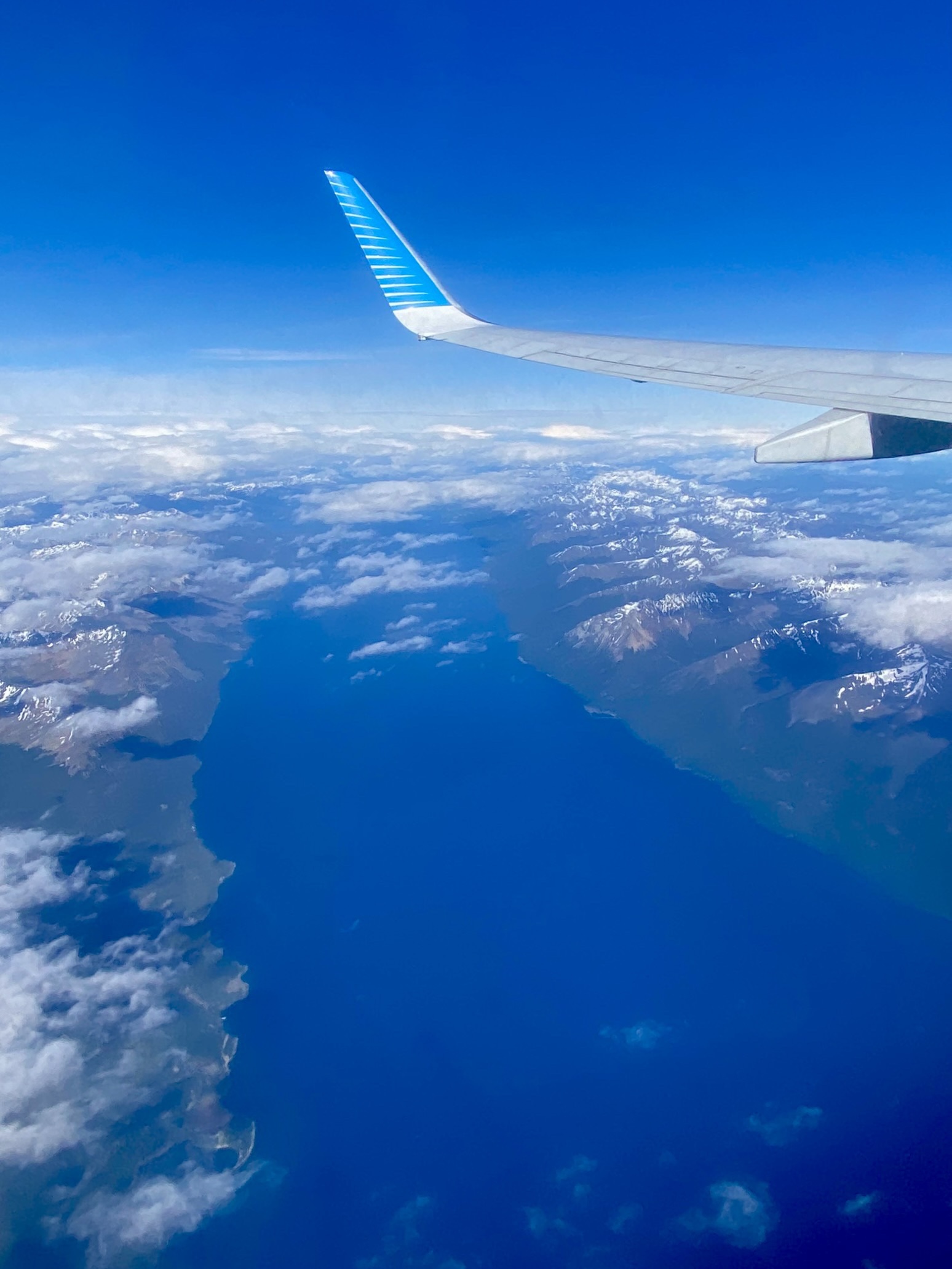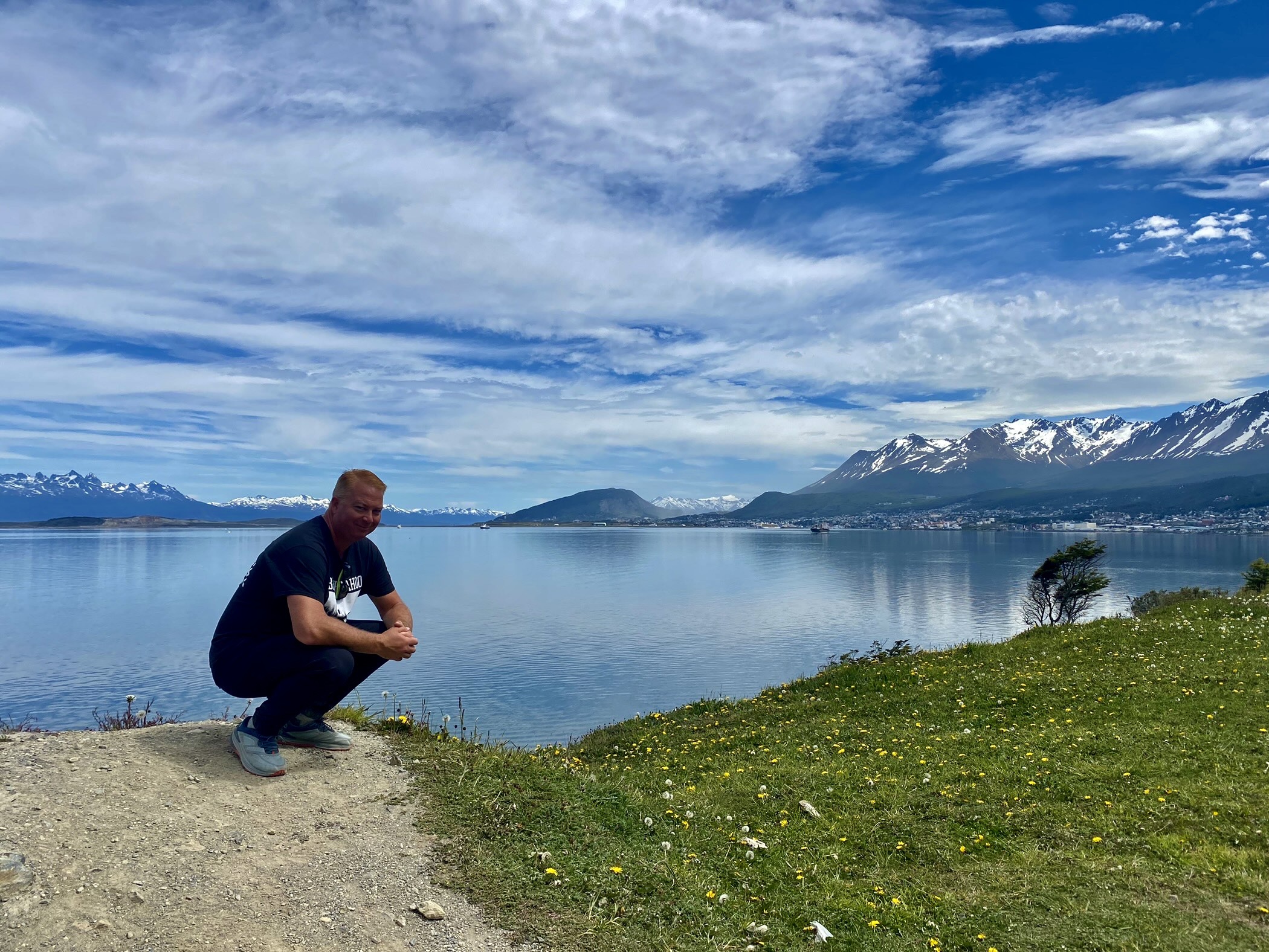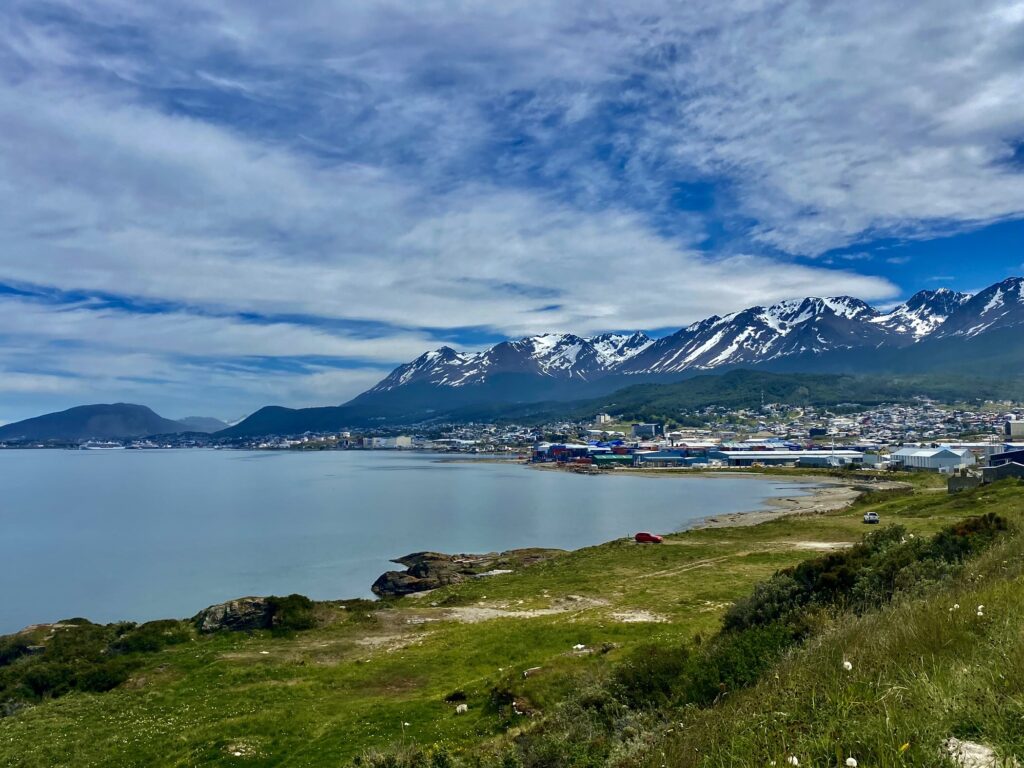
(NOTE: Argentina’s currency situation is, well, complicated. All prices quoted in this article were paid using Argentine pesos and converted to US dollars (USD) at the “tourist dollar” rate, typically by using a credit card or by withdrawing pesos from an ATM. We will explain more in a future post!)
Here we are at the end of the world, El Fin del Mundo. It sounds quite dramatic but that is what the locals call this part of South America. This is the southern tip of Argentina, under 100 miles from Cape Horn and the terminus of South America.There is an End of the World Train, a Post Office at the End of the World, and a Museum of the End of the World.
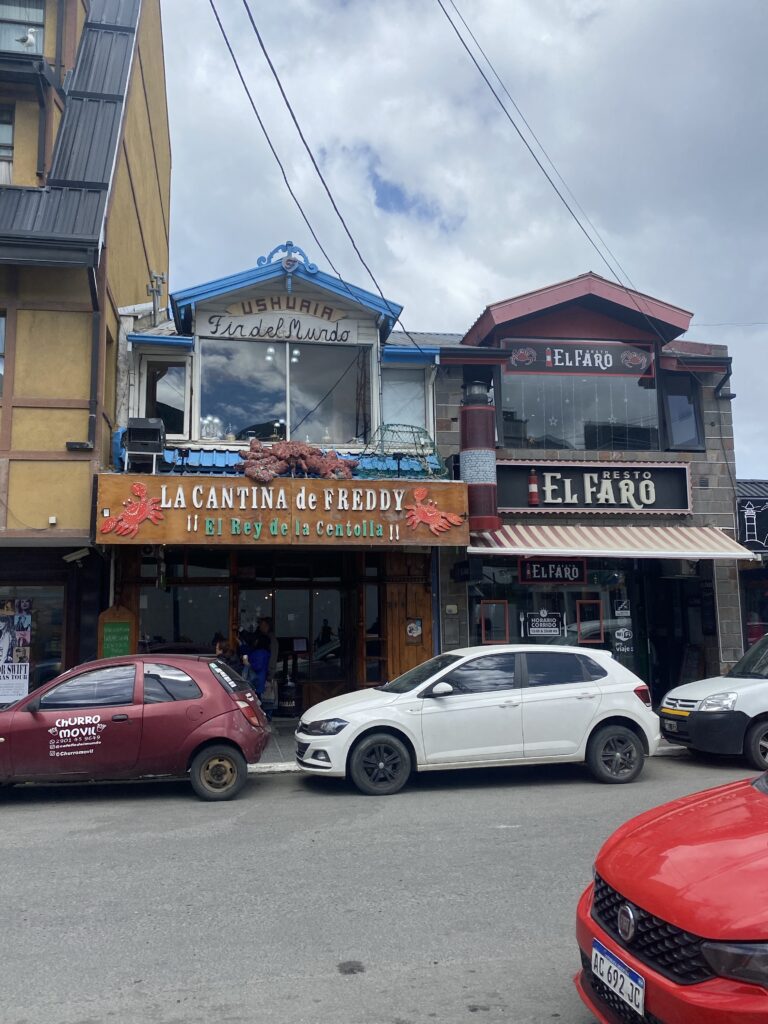
The Argentinians are fond of saying that Ushuaia is the southernmost city in the world, but like many things, there is a dispute with Chile on that matter. Just southeast of Ushuaia, across the Beagle Channel, is the port town of Puerto Williams, Chile, home to around 3,000 people. Argentina says that 3,000 people does not make a city, but Chile counters back that Ushuaia (80,000 people) is also too small to count as a city, and the real southernmost city is Punta Arenas, Chile (125,000 people). Whatever city deserves the title, Ushuaia certainly feels like a town that is closer to Antarctica than it is to Buenos Aires.
Ushuaia is like a mix between Leavenworth, Washington and a city in SE Alaska. The background is draped in craggy snow covered peaks and the air is so clean. There is an alpine feel and a mix of Bavarian-style buildings that line the small downtown core. Ushuaia is as far south as Sitka is north, and it is as isolated from mainland Argentina as Alaska is to the the Lower 48. There are no roads to reach the island, and Ushuaia cannot be reached from mainland Argentina without first crossing through Chile. The population density is also low, like Alaska, with the proximity to the ocean playing a major role in the population distribution. They even have a thriving chinook salmon population, although in the Southern Hemisphere, chinook salmon are an invasive species: Columbia River spawn that were released decades ago in Chile.
And like Sitka, multiple cruise ships dock in the harbor each day during the summer season. In a short summer season, there are 500 “cruise calls,” bringing around 200,000 visitors to the area.
Unlike Alaska, here the typical ships are smaller vessels that carry hundreds and not thousands of people. But the port can accommodate larger vessels as well, and the day we joined the Lindblad National Geographic Explorer, we were docked next to Holland America’s Oosterdam.
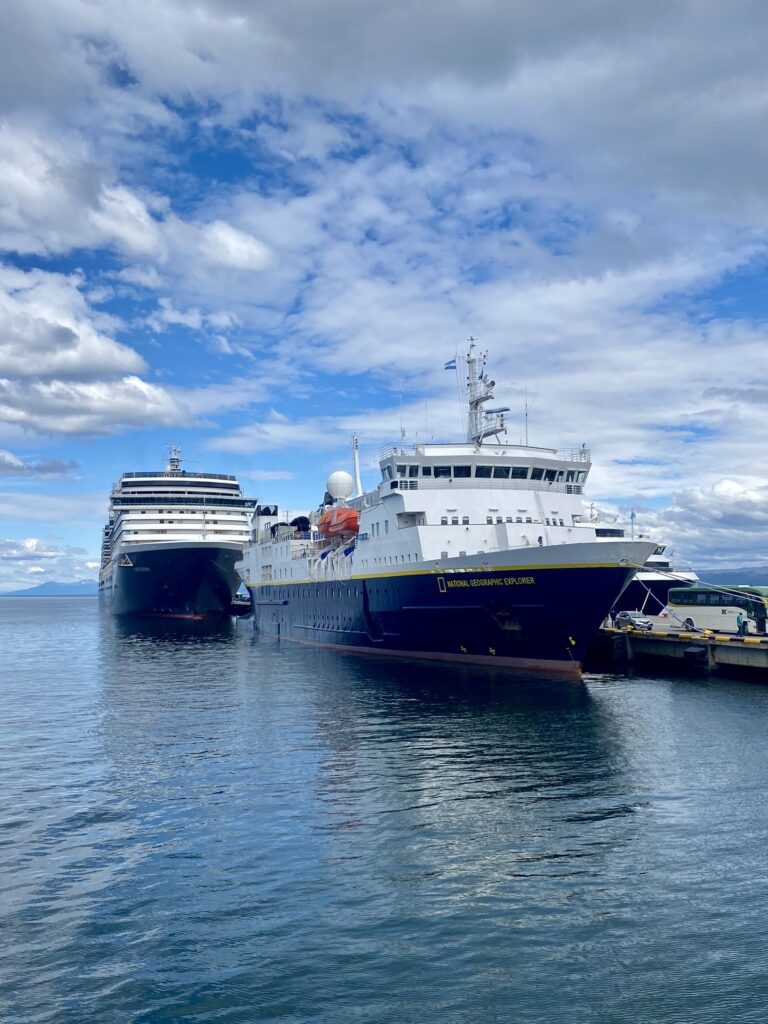
Oosterdam is the ship we wanted to take from Fort Lauderdale to South America, and she found us down here at the end of the world. Oosterdam is also the sister ship to the Westerdam, and so we had a few conversations with people about what it was like to spend 30 days on a “big” cruise ship. This was funny to us, because while the Vista-class Oosterdam dwarfed the smaller expedition cruise ships, we have also been in cruise ports where the Vista-class ships are eclipsed by the Royal Caribbean Oasis-class ships, which are 70% larger by gross-tonnage!
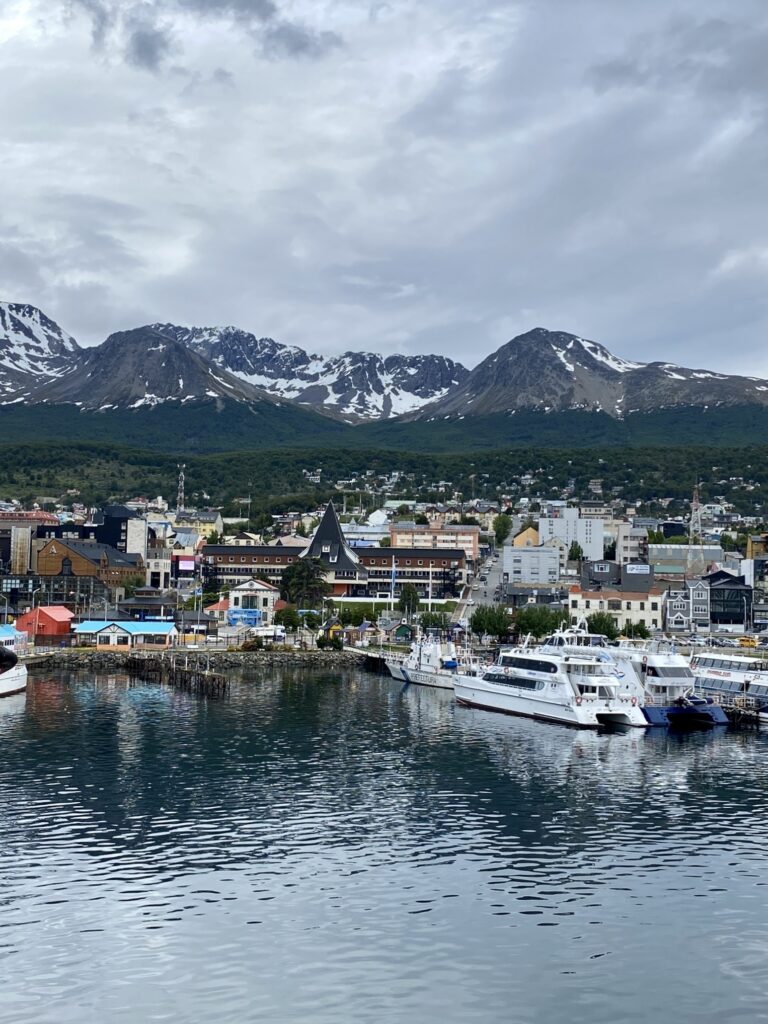
Being in Ushuaia at the summer solstice means high temperatures of roughly 65 degrees F. We got to experience those temperatures, which felt great. But we also felt the cold wind come down from the mountains. We wore t-shirts in the sunshine and carried down jackets for the shade. Like New Zealand or Colorado, you can experience all four seasons in a single day!
Fun fact! The Andes change orientation down here, and go from west to east.
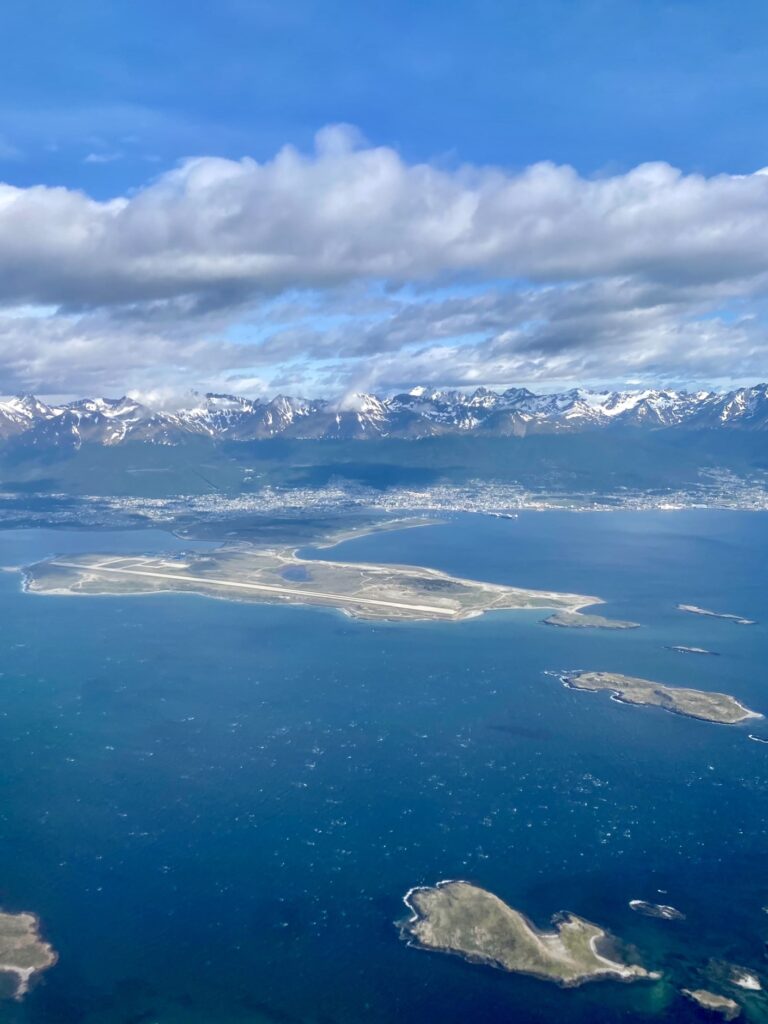
City History
To bolster the population and make a claim to Tierra del Fuego, Argentina established a penal colony here in 1896, taking a page from Australia.
More recently, Argentina has encouraged industrial development in the area, and much of the local economy that is not focused on tourism is electronics manufacturing. We have been surprised to see Industria Argentina on many products (like washing machines) that have not been made in the United States for decades.
We spent a few nights in Ushuaia both before and after our Lindblad cruise to Antarctica.
Pre-Cruise
We stayed right in the thick of things in a modern apartment through Airbnb. It was a fairly basic unit but mostly no complaints. The place was hot. I know it’s summertime and we scored with nice sunny weather, but with the solar gain, our apartment felt like a sauna! We turned the heat all the way down and kept every window open, and it was still toasty.
Also, the cost! As we explored town, we experienced sticker shock with almost everything: accommodation, food (restaurant and grocery), clothing. The only great deals we found were in the wine section of the supermarket, where good local bottles were available for $3 USD!
Errands
We mostly ran around trying to do laundry, buy warm clothes, and walk around town. In line with what we had read, the outdoor shops in Ushuaia are quite expensive, more so than the United States. Corey did find a warm and affordable jacket at Montagne, an Argentine store (that sells Argentine-manufactured garments).
Hiking
One day we walked down the highway that takes you east out of town. It was not a pleasant walk as it was dusty and lacking in sidewalks. Eventually we reached a beautiful viewpoint at Playa Larga (Long Beach). This popular site provides views of the mountains surrounding the area and of the sprawling city.
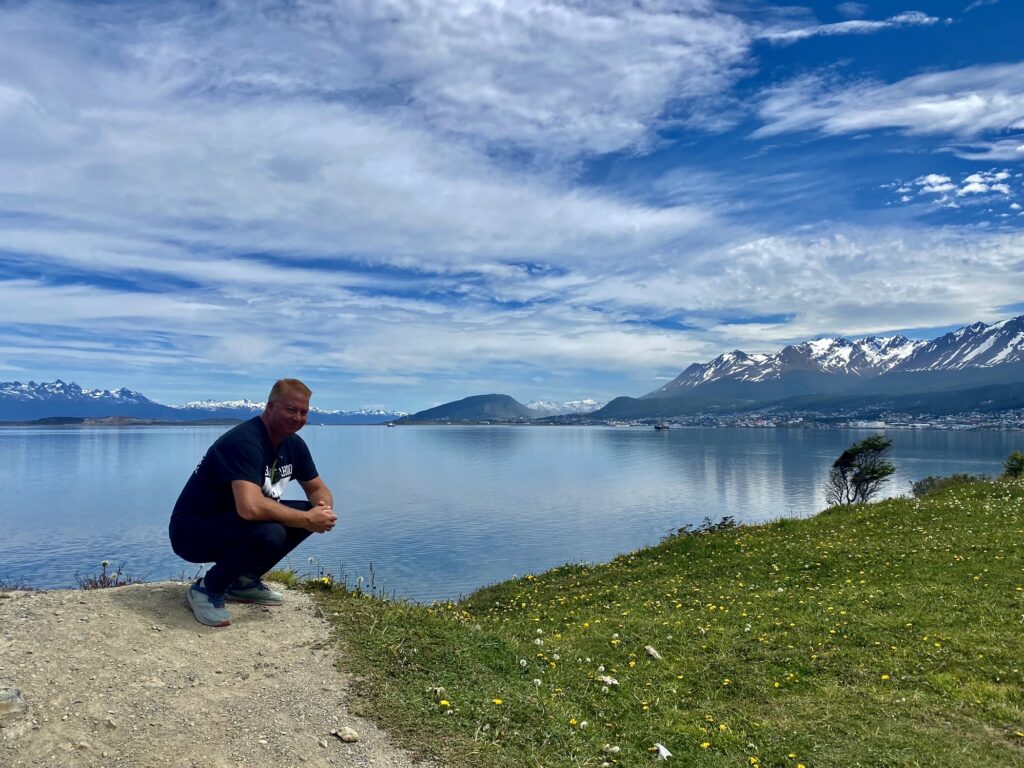
This is worth a visit, but we recommend taking a taxi or Uber out here, enjoying the beach or the hiking trails, and then calling an Uber to return. We had no problem with cell service from the parking lot.
Cuisine
Our first foray into Argentine dining was a steak dinner. Even at the inflated prices, dinner for two, with a bottle of wine, was under $50 USD.
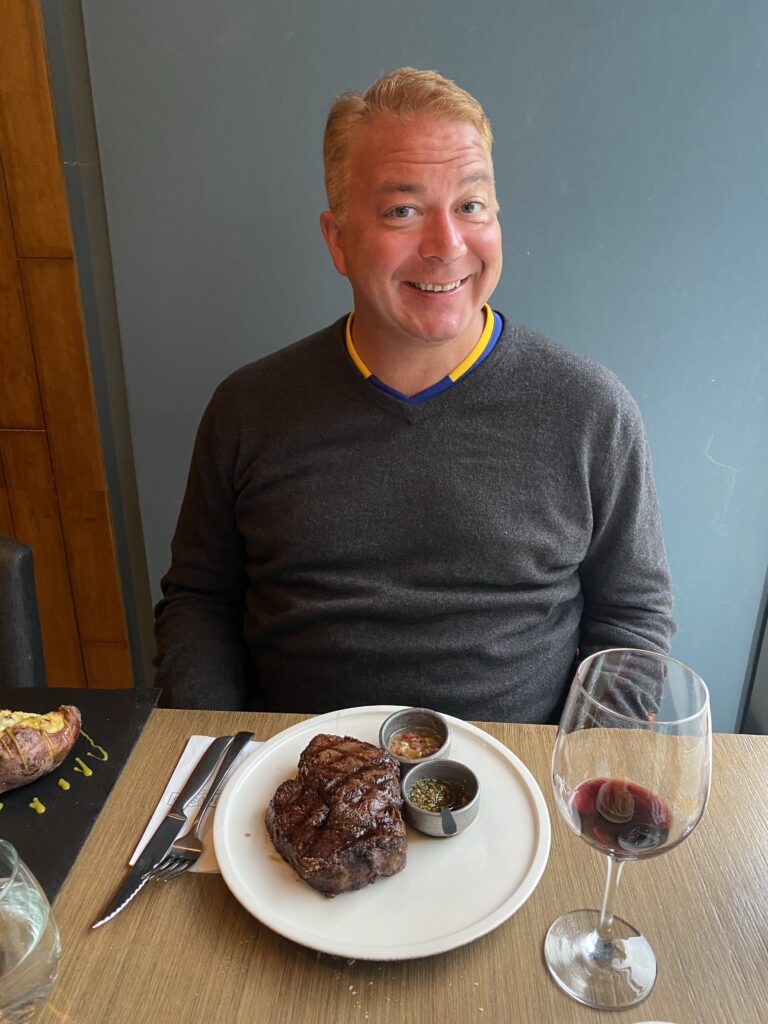
The best meal we had was roasted lamb at Casimiro Biguá. We had seen this restaurant reviewed on YouTube, and when we walked by we could smell the smoke from the parrilla grill, located in a showcase position street-side. Fresh, delicious lamb with a meager salad and white wine. Oops! We ordered a Torrontés, and somehow we both thought that it was a Spanish red grape. Now we know that Torrontés is a high-acid white that is the most common white in Argentina. It actually paired nicely with the vinegar of the chimichurri, and we have learned that you pair to the sauce, not the protein. (But next time we would get a red.)
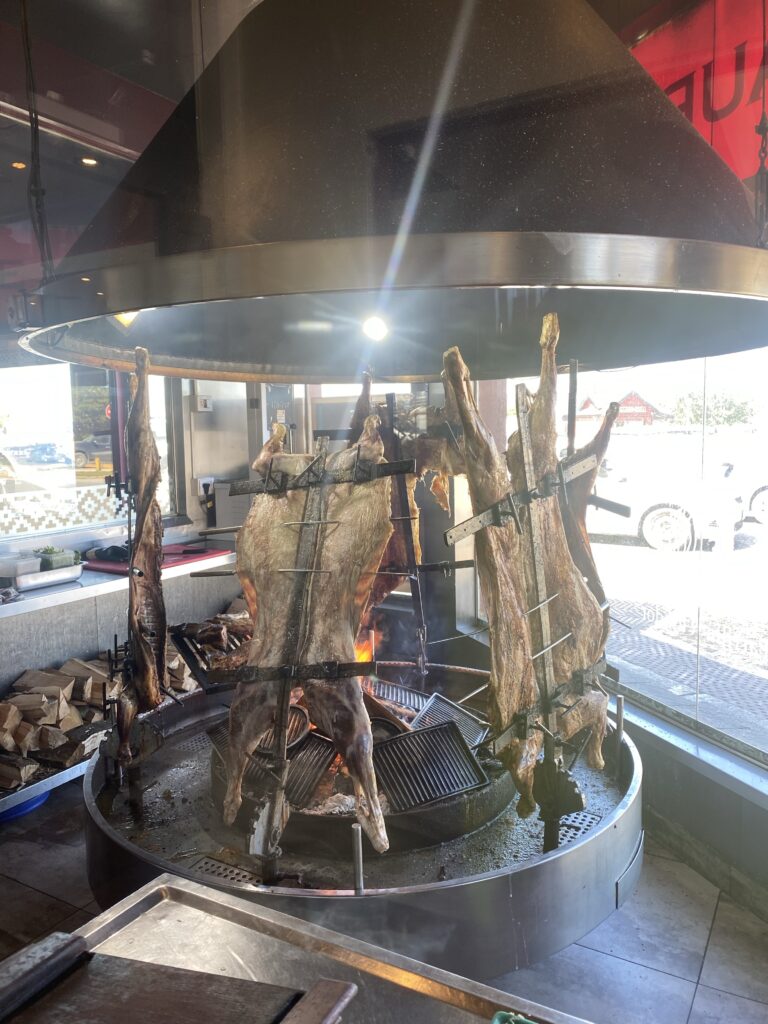
King crab is another specialty of the region, and while the prices are high for Argentina, they are drastically less expensive than the current market prices for king crab in Alaska. There are a number of well-reviewed restaurants with live crab tanks, but we ended up not dining at any of them.
Post-cruise Ushuaia:
We stayed in the western part of town, away from the busy port/downtown area. It had zero tourist appeal, which we liked. The Airbnb was spacious for a studio, but it was again hot enough that we kept the windows open. The street noise around Ushuaia was annoying, at all hours of the day: loud honking cars with music blaring, dogs barking at cars, people yelling at dogs, at all hours of the day. Then even though it is not hot, and the sun has not set, Ushuaia keeps to the Argentine dinner hours of 9-11 PM.
There was a small, well-stocked kitchen but we mostly dined out because take out food remained inexpensive. We also ate so well on the Lindblad ship that it felt good to eat less and shrink our bellies down to a normal size. Most of the food available in the area was delicious pizza and empanadas, and also a great place called Super Burger, located at the snack bar of an indoor soccer practice space. The kitchen is upstairs and they used a burger elevator to bring the cooked food down.
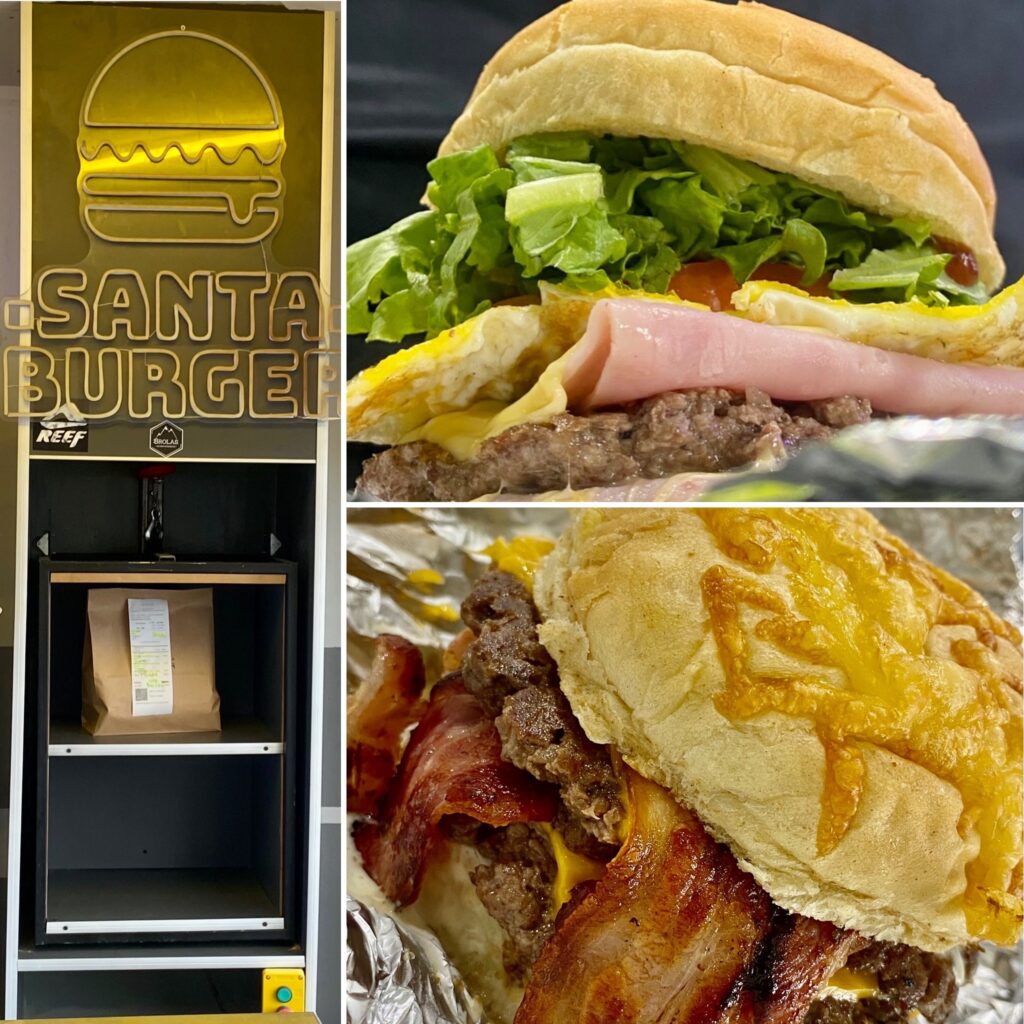
Ushuaia is the kind of place where when you look at the next block it looks like something really interesting is happening. But you walk there and it’s nothing. We did not find much interesting about the town. Especially downtown, it seemed like a real cruise-stop-city, with hiking outfitters, chocolate shops, tourist shops, and restaurants.
Hiking
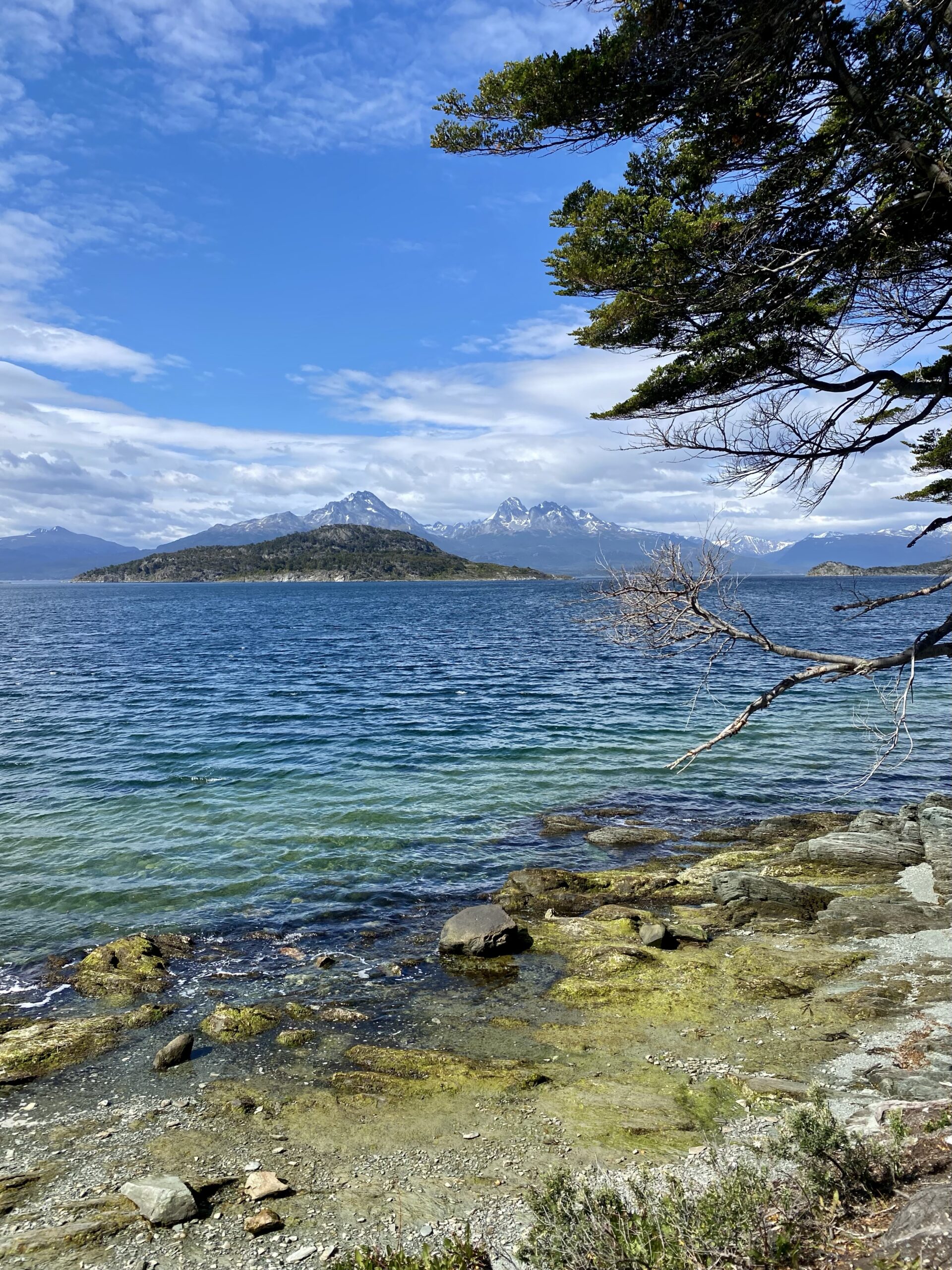
Most of the hiking is west of town, either the Martial Glacier (which is above town), or in the Tierra del Fuego National Park. Before embarkation on the Lindblad ship, we had a short bus tour through the National Park, and we wanted to go back and explore more. The weather was pleasant and we boarded a bus that took us to the park. Buses to the park, and many other destinations, are available at the Bus Terminal of Ushuaia, on the waterfront by the cruise pier, and easy to find using Google Maps.
Because this is a tourist town everything is expensive. The bus was around $16 USD per person, roundtrip. We figured that for that price, it included the entrance fee. Imagine our surprise when the bus stopped at the entrance to the park, leaving everyone to go stand in line and then pay another $27 USD. So we were out nearly $60 USD for a day of hiking, which is well more than we pay to visit national parks in the US!
Even though we had already visited this park through Lindblad, I really wanted to go back to send post cards from the special Correo del Fin de Mundo, the Post Office at the End of the World.
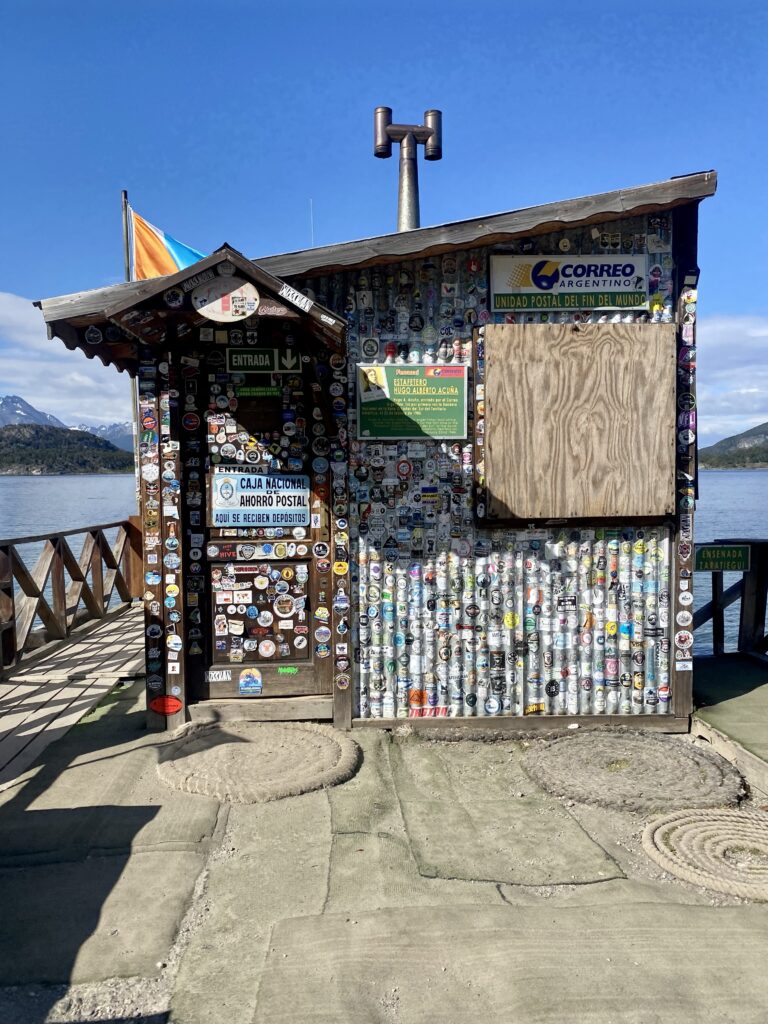
After taking care of that errand, we hiked the Costera Trail (Trail #2) along Lapataia Bay. It was a seven-mile hike, mostly along the coast, that everyone says is more-or-less flat. Well, my step counter let me know it was the equivalent of climbing 58 stories. It was a really nice moderate hike!
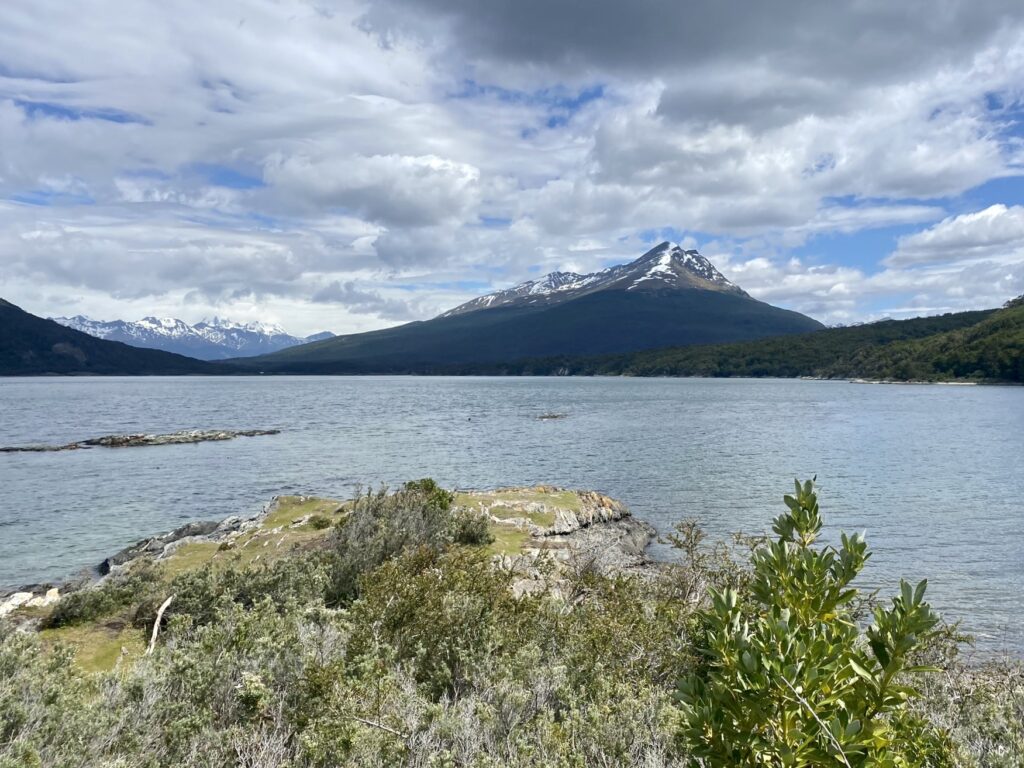
At one point the trail led down into a grassy valley and there were wild horses scattered around. So cool! We had heard that these horses are descendants of the horses brought to South America by the Spanish conquistadors, and that they can actually be a bit of a nuisance to the native vegetation. Regardless of where they came from, I am glad we saw them.
There are also 250 species of birds around the area. One unique one is the flightless steamer duck, all grey and shiny orange beak. We saw them while hiking. Just after we left the horses we spotted a duck family near the trail.
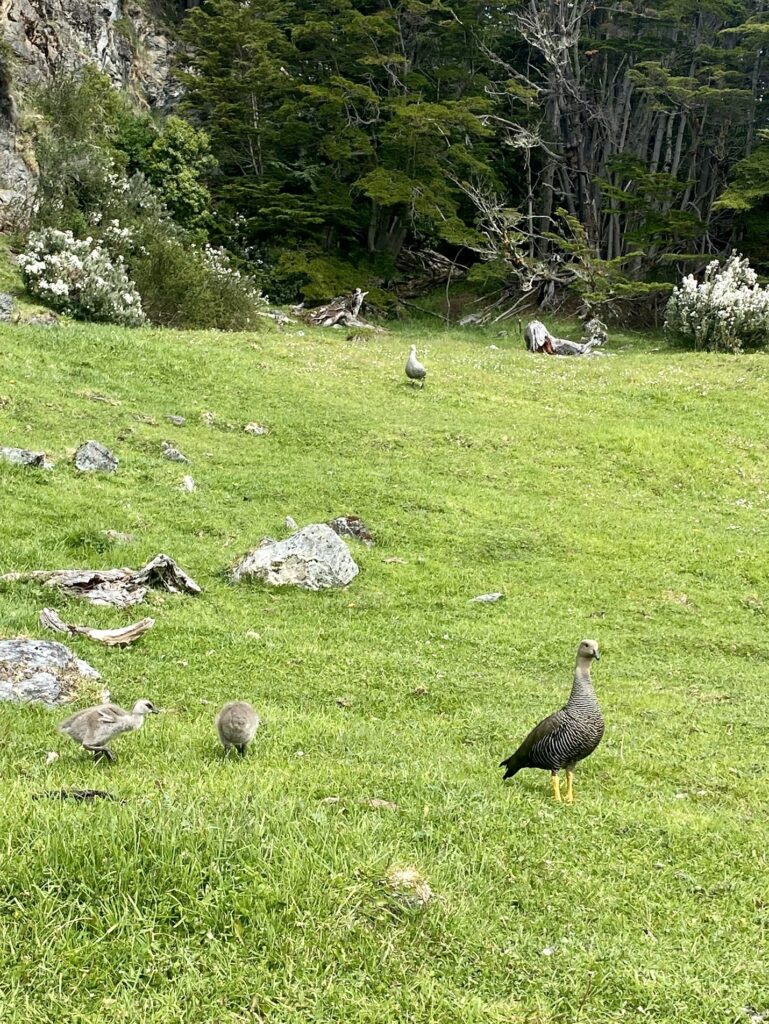
The views were outstanding until the last quarter mile of the trail, when Corey was looking at a map on his phone and banged into a low tree. Thankfully we always travel with a first aid kit and we patched up his head wounds on the trail.

We hiked more around the park and back to the visitor center and Lake Acigami (aka Lake Roca), both of which we had visited on the previous tour. It was a nice day in the park and we clocked 12 miles.
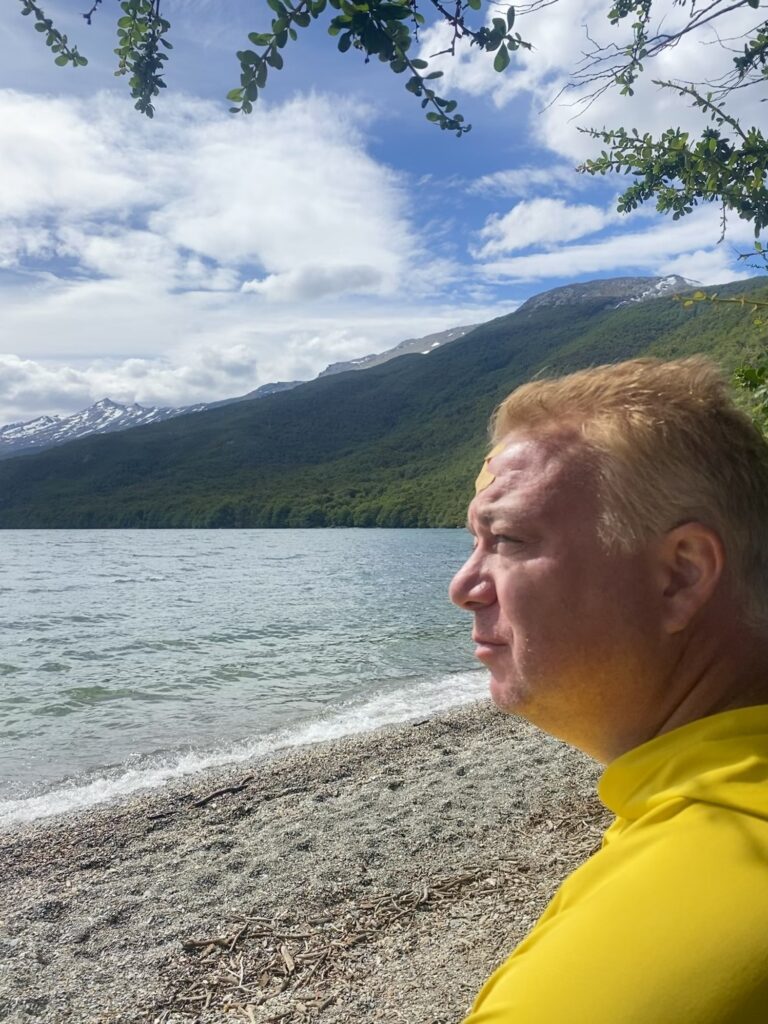
Errands
“Oh my calves!” I groaned the next morning as I crawled out of bed. It was our last day. No rest for the weary.
So we went to the post office again, repacked our stuff and also did some laundry.
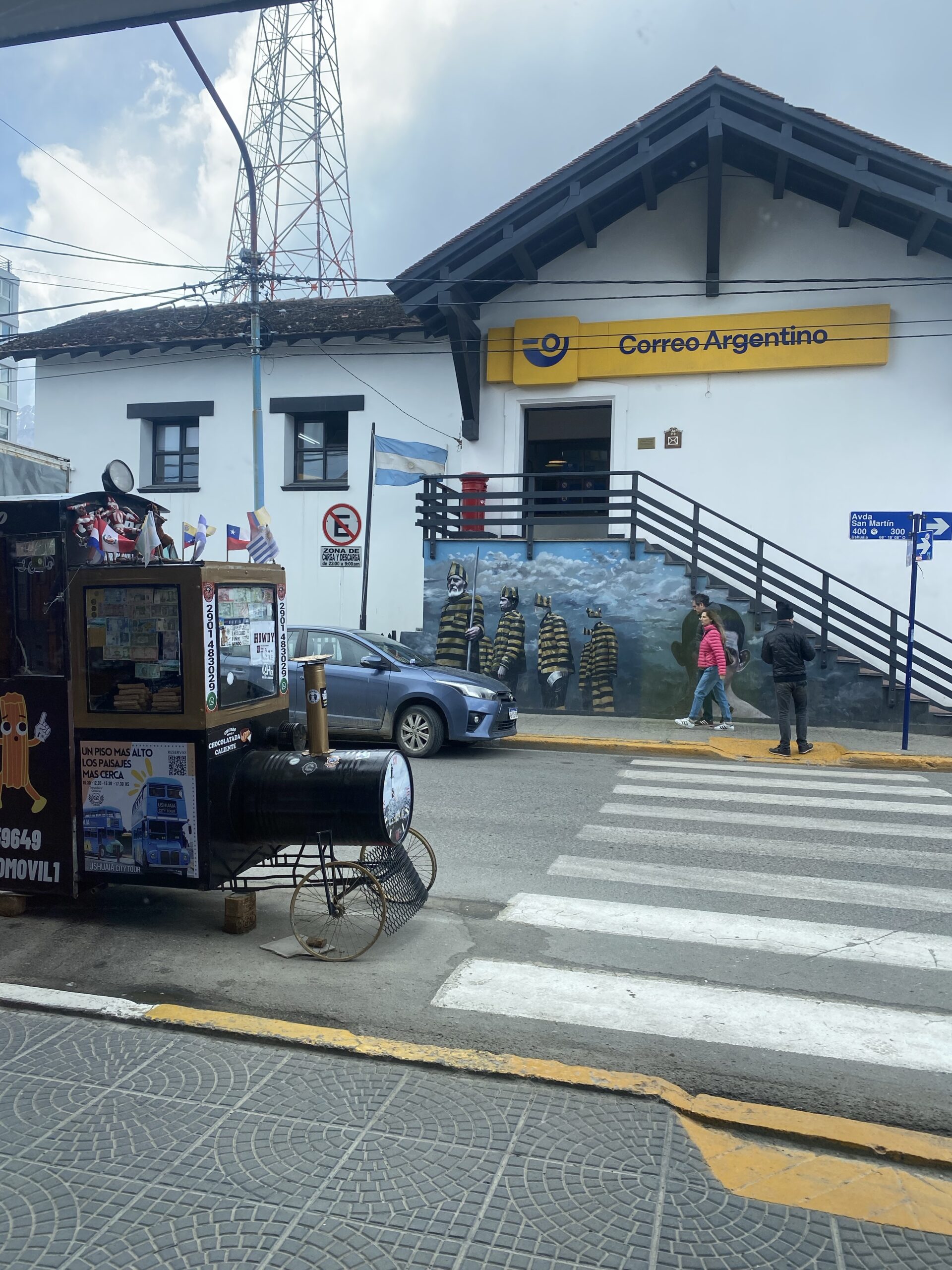
Now we are excited to go to Mendoza, Argentina, where we will feel the desert heat and walk through the vineyards. Goodbye end of the world!
